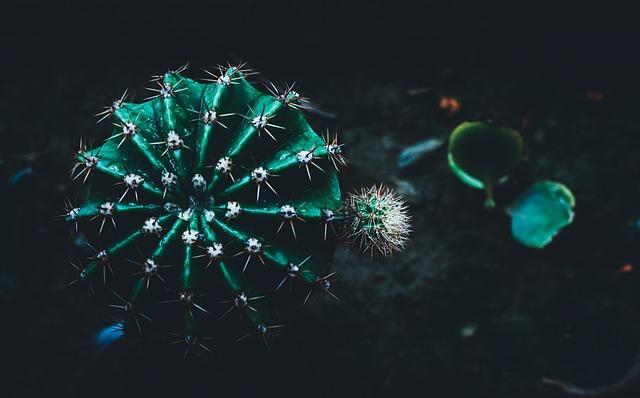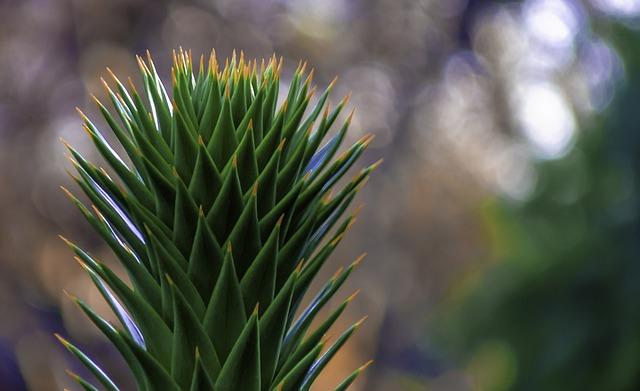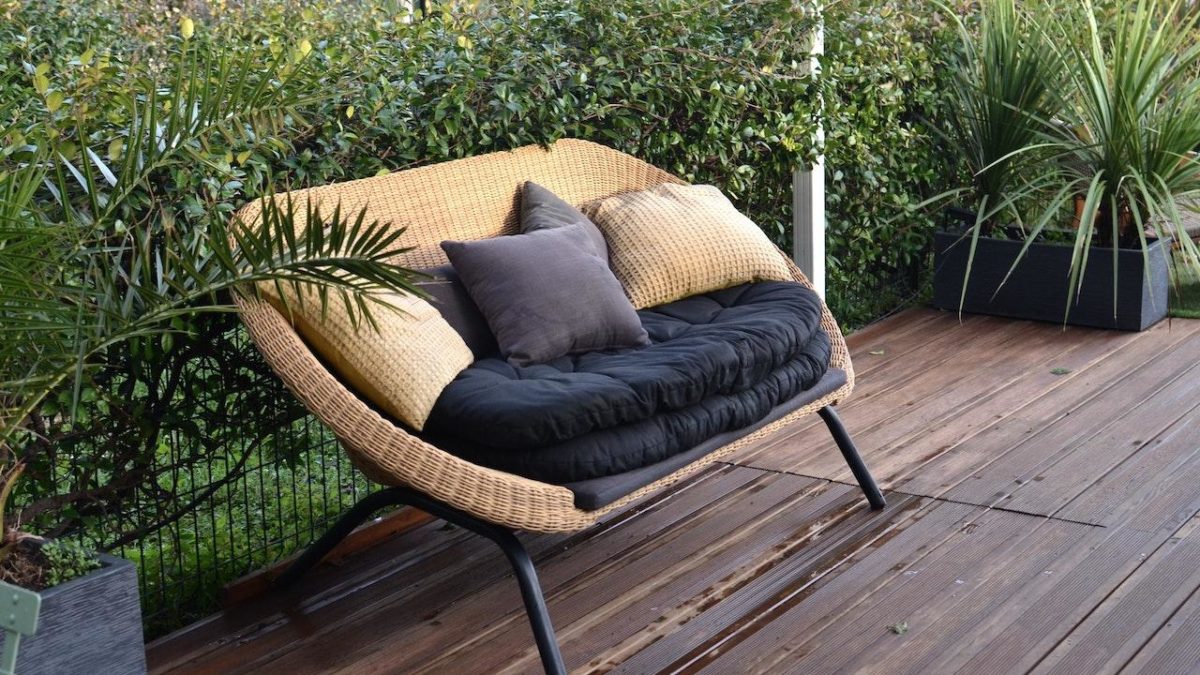Spiky houseplant trees are a type of plant characterized by their spiky, needle-like leaves. These trees are native to tropical and subtropical regions, and they are often used as ornamental plants in home gardens.

Credit: Pexels
Spiky houseplant trees are typically evergreen, meaning that they will keep their leaves year-round. Some popular varieties of spiky houseplant trees include the yucca, agave, and cactus. These plants are easy to care for and can thrive in a wide range of climates.
If you’re looking for a unique addition to your home, a spiky houseplant tree is a great option. These plants are sure to make a statement in any room, and they can help to purify the air and improve your indoor air quality.
Where Do Spiky Houseplant Trees Come From?
Spiky houseplant trees come from a variety of places. Some are native to tropical areas, while others come from more temperate climates. There are even some that are native to arid regions.
Spiky houseplant trees can be found in several different habitats. They may be found in rainforests, deserts, and even urban areas.
The most common type of spiky houseplant tree is the cactus. Cacti are native to the Americas and thrive in hot, dry climates. They have thick, fleshy stems that store water, and their leaves are small and often spiny.

Other types of spiky houseplant trees include agave, yucca, and aloe. Agave is native to Mexico and the southwestern United States. It has long, sharp leaves that are often used to make tequila. Yucca is native to the southeastern United States and has thick, spiky leaves. Aloe is native to Africa and has long, thin leaves that are often used in cosmetics and medicine.
Spiky houseplant trees are popular houseplants because they are easy to care for and require little water. They are also low-maintenance and can survive in a variety of different climates.

What Are The Benefits Of Spiky Houseplant Trees?
Spiky houseplant trees are a great addition to any home. They are easy to care for and can add a touch of elegance to any room. Here are some of the benefits of spiky houseplant trees:
-
They are easy to care for.
Spiky houseplant trees are very easy to take care of. They only require occasional watering and don’t need much sunlight. This makes them ideal for people who do not have a lot of time to take care of their plants.
-
They can add a touch of elegance to any room.
Spiky houseplant trees are very elegant and can add a touch of class to any room. They are also great conversation starters.
-
They are great for people with allergies.
Spiky houseplant trees are great for people with allergies. They do not produce any pollen or other allergens. This makes them an excellent option for people who suffer from allergies.
-
They are low maintenance.
Spiky houseplant trees are very low maintenance. They do not require a lot of care or attention. This makes them ideal for people who do not want to spend a lot of time taking care of their plants.
-
They are long-lasting.
Spiky houseplant trees are very long-lasting. They can last for years with proper care. This makes them a great investment for people who want to add a touch of elegance to their homes.
What Are The Different Types Of Spiky Houseplant Trees?
There are many different types of spiky houseplant trees. Some common ones include the cactus, yucca, and agave.
- Cacti are a type of spiky houseplant tree that is native to the Americas. They are usually found in desert regions and are known for their ability to store water in their stems.
- Yuccas are another type of spiky houseplant tree that is native to North and Central America. They are often used as ornamental plants due to their beautiful flowers.
- Agaves are a type of spiky houseplant tree that is native to the deserts of Mexico. They are often used in the production of tequila.
How Do Spiky Houseplant Trees Grow?
Spiky houseplant trees are a type of succulent that grows in a treelike shape. The leaves are thick and fleshy, and the stems are covered in spines. These plants are native to arid regions of Africa and Asia, and they are adapted to survive in hot, dry climates.

- Spiky houseplant trees grow best in bright, indirect sunlight. They can tolerate some direct sun, but too much sun will cause the leaves to scorch. These plants prefer warm temperatures, and they will not tolerate frost.
- To water, a spiky houseplant tree, wait until the soil is completely dry before watering. Then, give the plant a deep watering, allowing the water to soak all the way through the roots. Allow the excess water to drain away and do not water again until the soil is dry.
- Fertilize spiky houseplant trees every two to four weeks during the growing season. Use a balanced fertilizer that is formulated for succulents. Stop fertilizing in the winter when the plants are dormant.
- Spiky houseplant trees can be propagated from stem cuttings. Take a cutting from a healthy plant, and allow the cuttings to callus over for a few days. Plant the callused cuttings in well-draining succulent soil. Keep the soil moist but not wet, and the cuttings should root within two to four weeks.
What Do Spiky Houseplant Trees Need To Survive?
Spiky houseplant trees are not like your average houseplant. They need a little bit more care to thrive. Here are some tips on what you need to do to take care of a spiky houseplant tree:
- Make sure the tree is in a pot that has drainage holes. Spiky houseplant trees do not like to sit in wet soil, so good drainage is a must.
- Place the tree in a bright spot, but not in direct sunlight. Spiky houseplant trees need bright light to grow, but too much direct sunlight can scorch their leaves.
- Water the tree when the top inch of soil is dry. Again, because these trees do not like wet feet, you don’t want to overwater them. Let the soil dry out in between waterings.
- Feed the tree once a month with a balanced fertilizer. This will help the tree to grow strong and healthy.
- Trim off any dead or dying leaves as needed. This helps the tree to look its best and also helps to encourage new growth.
How Can Spiky Houseplant Trees Be Used In Decorating?
Spiky houseplant trees can be used in a variety of ways to add some visual interest to your home. They can be placed in a corner as a stand-alone statement piece, used to fill in an empty space on a shelf, or even hung from the ceiling.

Credit: Pexels
- One way to decorate with a spiky houseplant tree is to place it in a corner as a stand-alone statement piece. This will create a focal point in the room and can be used to add some color and life to an otherwise bland space.
- Another way to use a spiky houseplant tree is to fill in an empty space on a shelf. This can help to create a more cohesive look on the shelf and can add some extra interest to the room.
- Spiky houseplant trees can also be hung from the ceiling. This is a great way to add some height to a room and can create a really unique and eye-catching look.
What Are Some Creative Ways To Use Spiky Houseplant Trees?
- One way to use a spiky houseplant tree is to create a privacy screen. Plant the trees close together and they will eventually grow tall and dense, providing a natural privacy fence.
- Another way to use a spiky houseplant tree is to create a windbreak. Plant the trees on the side of your property that gets the most wind. They will eventually grow tall and dense, providing protection from the wind.
- Finally, you can use a spiky houseplant tree to create a living sculpture. Plant the tree in a pot and prune it regularly to create a unique and interesting shape.
What Are Some Tips For Taking Care Of Spiky Houseplant Trees?
Spiky houseplant trees are a unique addition to any home, and they can be a bit tricky to take care of. Here are some tips to help you keep your spiky houseplant tree healthy and happy:
- Give your tree plenty of sunlight. Spiky trees need at least six hours of sunlight each day to stay healthy. If possible, place your tree near a south-facing window.
- Water your tree regularly. The soil should be moist, but not soggy. Allow the top inch of soil to dry out before watering again.
- Fertilize your tree every two weeks during the growing season. Use a fertilizer designed for houseplants.
- Prune your tree as needed to keep it the desired size and shape.
- Be careful when handling your tree. The spikes can be sharp and may puncture your skin.
Bonus Tips
- Place the spiky houseplant tree in a pot that is wider than it is tall.
- Fill the pot with a fast-draining cactus mix or all-purpose potting soil amended with perlite.
- Water the plant deeply, then allow the soil to dry out completely before watering again.
- Fertilize the plant every other month with a balanced cactus fertilizer.
- Place the plant in a bright location, but out of direct sunlight.
- Groom the plant regularly, trimming off any dead or dying leaves or stems.
Frequently Asked Questions
- What is a spiky houseplant tree?
A spiky houseplant tree is a type of tree that is characterized by its spiky leaves. These trees are native to tropical and subtropical regions, and they are typically found in forests or woodlands.
- What are the benefits of having a spiky houseplant tree?
Spiky houseplant trees are known for being low-maintenance and easy to care for. They are also known for being drought-tolerant, which means they can survive in dry conditions. Additionally, spiky houseplant trees can help to purify the air in your home.
- Where can I buy a spiky houseplant tree?
Spiky houseplant trees are widely available for purchase. They can be found at most garden centers or online retailers.
Conclusion
The spiky houseplant tree is a unique and interesting addition to any home. They are easy to care for and make a great conversation piece. If you are looking for something different to add to your home, the spiky houseplant tree is a great option.
Michelle Wilde
Related posts
2 Comments
Leave a Reply Cancel reply
![]()
About Michelle Wilde
Michelle Wilde is a stay-at-home mom and avid plant lover. Armed with a post-graduate degree in Computer Science (no kidding!), she loves researching plants and landscapes. When she is not caring for her 4 kids, she spends time on her passion for plants. She blogs at www.indoorplantschannel.com, the trusted source for indoor plants.
Learn more
Subscribe
* You will receive the latest posts and updates about indoor plants!
Search
Recent Posts
Categories
- Beginner Guides (10)
- FAQ (206)
- General (2)
- How-To Guides (212)
- Indoor Plants (214)
- Pest Management (2)
- Plant Problem Solutions (4)
- Seasonal Growing (2)
- Specialized Environments (2)
- Specific Plant Care (3)
- Technical Growing (2)

[…] 20 hours ago 9 min read […]
[…] The Spiky Houseplant Tree: A Unique Addition To Your Home […]